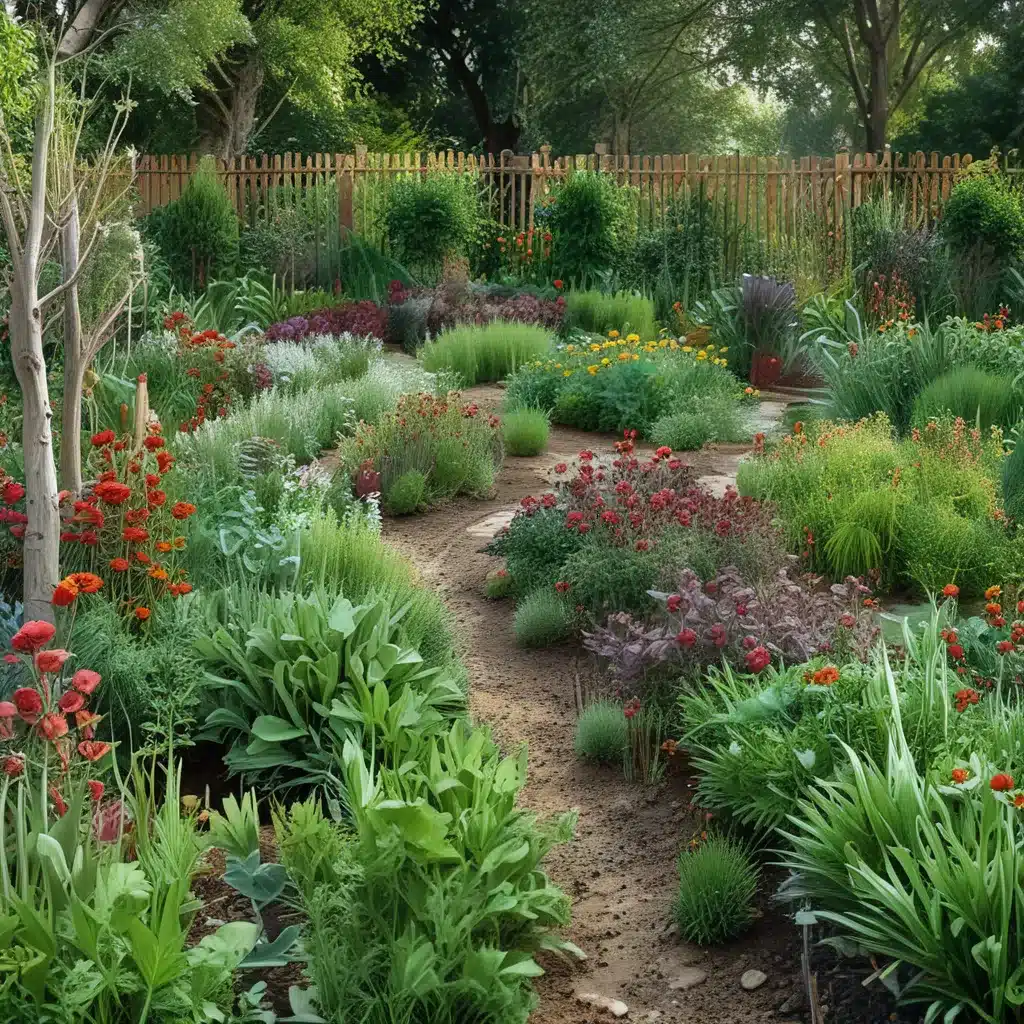
From Lawn to Luscious
When I first moved into my suburban home, the front yard was a typical expanse of green lawn – the kind you see everywhere in the suburbs. But as I looked out my window, I couldn’t help but feel a little…bored. Lawn after lawn, stretching as far as the eye could see. Where was the life, the color, the nourishment? That’s when I decided to ditch the boring grass and transform my yard into an edible oasis.
It wasn’t an easy decision at first. After all, a lush green lawn is the suburban standard. But then I learned that lawn is actually the largest “crop” in the United States – and that less than 2% of Americans even farm anymore. As the article on Tenth Acre Farm points out, the suburbs are ripe for a small-farm revolution. Why settle for a monotonous lawn when I could have a vibrant, productive landscape that nourishes both my body and my senses?
Edible Elegance
So I set to work, gradually replacing sections of my lawn with an array of edible plants – from cherry trees and currant bushes to strawberries, herbs, and vibrant veggies. It was a process, for sure, but with each new planting, my dull, lifeless yard was reborn into a veritable feast for the eyes (and taste buds!).
One of the best parts? My new edible landscape quickly became a hub of activity and conversation in the neighborhood. As the Tenth Acre Farm article mentions, the usual dog-walkers and passersby were suddenly captivated by my flourishing edible oasis. Instead of just exchanging pleasantries about the weather, we’d chat about the ripening cherries or the vibrant blooms of my edible flowers. It was a whole new level of community and connection.
And the aesthetic appeal? Off the charts. Gone were the monotonous green expanses, replaced by a symphony of colors, textures, and seasonal delights. Crimson currants giving way to golden raspberries, followed by the cheerful blooms of calendula and nasturtium. It was like living in a perpetual garden party – one that just happened to be chock-full of delicious, nutritious bounty.
Designing for Delight
Of course, transforming a traditional lawn into an edible landscape requires a bit of forethought and planning. As the Tenth Acre Farm article outlines, key considerations include everything from maintenance needs and deer resistance to creating a cohesive visual flow.
For me, one of the biggest lessons was to focus on perennial plants over annuals. While annuals like vegetables can provide a quick burst of productivity, they also require much more hands-on maintenance to keep them looking their best. Perennials like fruit trees, berry bushes, and hardy herbs, on the other hand, quickly settle in and require far less fussing.
I also learned the value of strategic plant placement. Instead of just randomly scattering edibles throughout the yard, I planned out intentional groupings and “guilds” that complemented each other both visually and functionally. My cherry tree, for example, is surrounded by a diverse array of beneficial companions like comfrey, yarrow, and borage – all of which help nurture the tree while also attracting pollinators and deterring pests.
And of course, no edible landscape is complete without a few whimsical flourishes. Cascading nasturtiums spilling over a retaining wall, vibrant beds of Swiss chard and marigolds, a fragrant path of lavender and thyme – these elements inject a sense of joy and delight that goes beyond mere practicality.
A Feast for the Senses
These days, stepping out into my front yard feels less like a chore and more like a sensory adventure. I’ll catch a whiff of the sage as I brush past, or marvel at the kaleidoscope of colors as the season shifts. And of course, there’s the sheer delight of harvesting ripe, juicy cherries or a handful of sweet berries – all from the comfort of my own home.
Best of all, my edible landscape has become a gathering place for my community, a source of wonder and connection. Instead of the usual monotony, my front yard has blossomed into a vibrant, productive oasis – one that nourishes both body and soul. And I wouldn’t have it any other way.
Design Delights: A Sampling of Edible Wonders
Of course, transforming a traditional landscape into an edible wonderland takes some careful planning. But the payoff is oh-so-worth it. Here are just a few of my favorite edible elements to incorporate:
| Plant | Benefits |
|---|---|
| Currant Bushes | Beautiful spring blooms, delicious summer berries, and striking winter silhouettes. Plus, they’re beloved by pollinators! |
| Strawberries | Who doesn’t love a juicy, fresh strawberry? Easy to grow, highly productive, and great for sharing with the whole neighborhood. |
| Herbs & Flowers | From fragrant lavender and thyme to vibrant marigolds and nasturtiums, edible herbs and flowers add pops of color and functionality. |
| Fruit Trees | Fruit trees like cherries and dwarf apples make stunning focal points while providing abundant harvests. |
| Swiss Chard | This hardy, colorful green thrives in garden beds and looks stunning paired with flowering companions like sweet alyssum. |
The beauty of an edible landscape is that you can really let your creativity shine. Whether you favor a cohesive color scheme or a delightful mishmash of flavors and textures, the possibilities are endless. The key is to choose plants that not only nourish you, but also delight your senses and bring your community together. After all, isn’t that what gardening is all about?
So why settle for a ho-hum lawn when you can feast your eyes and your palate on an edible oasis of your own making? With a little planning and a lot of passion, your front yard can become a true work of edible art. Who knows – you might even find yourself the talk of the neighborhood (in the best possible way!).



